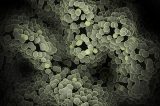ESL 2009: Sensory of cool-climate varietals
Proceedings of the XXIst Entretiens Scientifiques Lallemand held in Geisenheim Institute in Germany focused on cool-climate varietals and to understand how wine fermentation impacts their sensory properties. The meeting also celebrates the 115th anniversary of the Geisenheim Research Centre with a presentation by Prof Manfred Grossmann. Topics presented included Margaret River cool-climate Chardonnay, yeast and its role terroir expression in Germany and France, and how MLF impacts cool-climate varietals.
CahierGeisenheimComplet

